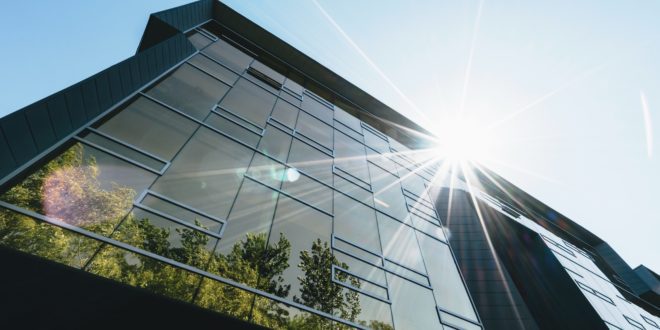
When the Industrial Revolution started in the mid-1800s, research on environmental harm was not available. As coal-powered factories were built, people in the United States and around the world couldn’t know the global devastation it would cause, not only on public health but on wildlife and ecosystems all over the planet.
Had they known about the negative repercussions it would come to have, stricter regulations might have been placed. While what transpired has ultimately resulted in unfathomable environmental distress, the good news is that we now have the research and information on sustainability.
Not only do we have the information, but we have plenty of resources — including methods and technology — to implement sustainable practices. Green building, green business, and green industry are the best ways forward to help ensure that we are able to outsmart the climate change that we have caused.
Urban Sustainability
In order to truly strive for sustainability, efforts must start with city planning. We cannot move forward if we keep constructing buildings with the same dirty methods. City planning and civil engineers can help ensure that building green is a priority.
Civil Engineers
Civil engineers can help resolve environmental problems by developing high-quality methods to use natural resources and protecting those natural resources from contamination. Ohio University reports on how civil engineers help relieve the problems related to contaminated water and algae blooms.
According to the university, civil engineers are helping to identify and treat emerging contaminants in water sources. They are finding many new contaminants in rivers and lakes, including:
- Persistent organic pollutants (POPs): pesticides, industrial chemicals
- Pharmaceutical and personal care products: fragrances, antibiotics, detergents, microbeads from body wash, cosmetics
- Endocrine-disrupting chemicals: synthetic hormones like estrogen or androgen, caffeine, alcohol
- Nanomaterials: carbon nanotubes, damaging nanoparticles found in sunscreens, cosmetics, paints
In addition to looking for ways to prevent contamination and decontaminate bodies of water, engineers help identify high-levels of algae in water. This phenomenon, called algae blooms, leads to a decreased supply in oxygen as the algae decompose and release neurotoxins into the water. This coupled effect causes a lot of damage to the aquatic ecosystems.
Additionally, the water can have detrimental effects if ingested by humans or animals. Civil engineers are working to understand the recent increase in algae blooms. Though they know what causes them — climate change, new sources of pollution, and the spread of invasive algae species — they are working to understand the intensity of them.
City Planning
Providing green methods of transportation is an important part of responsible city planning. Subway systems, bus routes, and bike lanes are all important for citizens to be able to use their cars less to get around town. Some cities even take it a step further and have bike share stations for the public to check out bikes.
Efforts made by cities include reducing their carbon footprints, using renewable energy sources, recycling, and green roof programs. Some of the greenest cities in America include the following for implementing these and more sustainability efforts into their city planning:
- Austin, TX
- Chicago, IL
- Berkeley, CA
- Seattle, WA
- Portland, OR
- Boston, MA
Though environmental concerns encompass a broad spectrum of issues, every person can make a difference in the fight for sustainability. Though no one person can fix any of these problems, everyone can help in stopping the damage.
Citizens can also take green building into their own hands and incorporate sustainability into building their own homes. This can be done by using steel and concrete rather than wood frames, low voltage LED lights, energy efficient appliances, run-off water collection, and using synthetic or controlled-forest wood for decoration.
If everyone took it upon themselves to build green in their homes and cities, the planet would be in much better shape. No one is exempt from green responsibility. As inhabitants of the planet, we should all work to protect and heal our earthly home.
 Alternative Energy HQ solar power for homes, wind energy, and bio fuel issues
Alternative Energy HQ solar power for homes, wind energy, and bio fuel issues







